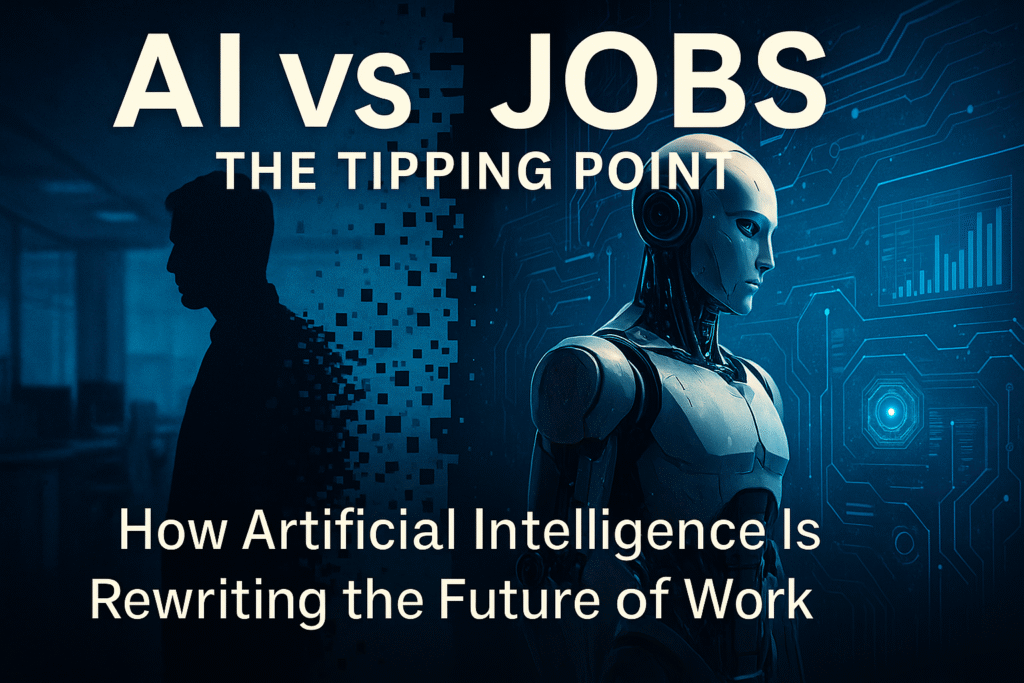🔍 The AI Job Shock: What You Need to Know
AI job displacement is no longer a prediction—it’s happening now. Millions of roles are being redefined or eliminated across industries, reshaping the global workforce,
Artificial Intelligence (AI) is no longer just a buzzword—it’s a workforce disruptor. According to Dario Amodei, CEO of Anthropic, AI could wipe out up to 50% of all entry-level white-collar jobs. That means a potential unemployment rate of 20%, comparable to the Great Depression era.
📊 How Much Has AI Already Impacted Jobs?
- 14% of global workers (around 375 million people) have been affected by AI—either displaced or forced to switch careers.
- So far, about 5 million jobs have been lost globally due to AI.
- U.S.: 1.9 million jobs gone
- China: 1.2 million in logistics and manufacturing
- India: 650,000 IT jobs impacted
💼 Sectors Hit the Hardest by AI
- Customer Service & Call Centers – 1.2M jobs lost via chatbots
- IT Support & Tech Services – 850K lost through automation
- Warehousing & Logistics – 1.1M jobs gone due to AI robots
- Administrative & Clerical Roles – 750K eliminated by AI tools
- Banking & Finance – 400K replaced, including analysts
- Retail & E-Commerce – 300K affected by automation
👩💻 Gender Gap in AI Impact
A UN study shows women’s jobs are more vulnerable—41% of female roles are at risk vs. 28% for men. That’s because fields like admin and support, which are heavily female-dominated, are easier to automate.
🛑 Can AI Replace Everyone?
Not quite. Companies like Clara and IBM have found AI replacements are limited. IBM planned to replace 8,000 jobs but managed only a few hundred.
🔁 A Dual Future: Jobs Lost, Jobs Gained
- By 2026, 75 million jobs may be displaced.
- But 133 million new roles could emerge—requiring entirely different skills.
⚖️ Who Benefits from the New Jobs?
The better educated and more connected stand to gain. The working class, on the other hand, is more likely to be left behind—unless massive retraining and regulation take place now.
💡 Final Thought
The question isn’t “if” AI will take your job—it’s “what will you do when it does?” The time to retrain, reimagine, and regulate is now. Let’s shape a future that’s not just artificially intelligent—but human-centered and inclusive.



